Scariest Bridges in the World That You Won't Want to Cross

Around the world, bridges constructed of steel or hastily fastened withered wood take travelers from one land to another. With the confidence needed to traverse into new territories and opportunities, you would think crossing a bridge would be no big deal, right? Wrong. Despite the thousands of up-to-code bridges all over the world, there are a few that are just a bit more worn-down. Well, worn-down doesn’t necessarily encapsulate the completely unsafe, weathered, dangling bridges crafted with thin metal cables and slim wood planks that have simultaneously been in use for decades by thousands of people. In other words, there are notably resilient bridges and then we have some of the scariest bridges. And it is here that we examine the scariest bridges. In case things go wrong, don’t forget to bring a parachute if you decide to visit!
Canopy Walk, Ghana

Standing at over 100 feet tall, it’s no surprise that the people of Ghana call this type of bridge a canopy walk. Upon crossing this nearly 1,000 foot-long suspended bridge, the Kakum Canopy Walkway will leave visitors feeling accomplished as this is one of only three canopy walkways in Africa.
Langkawi Sky Bridge, Malaysia
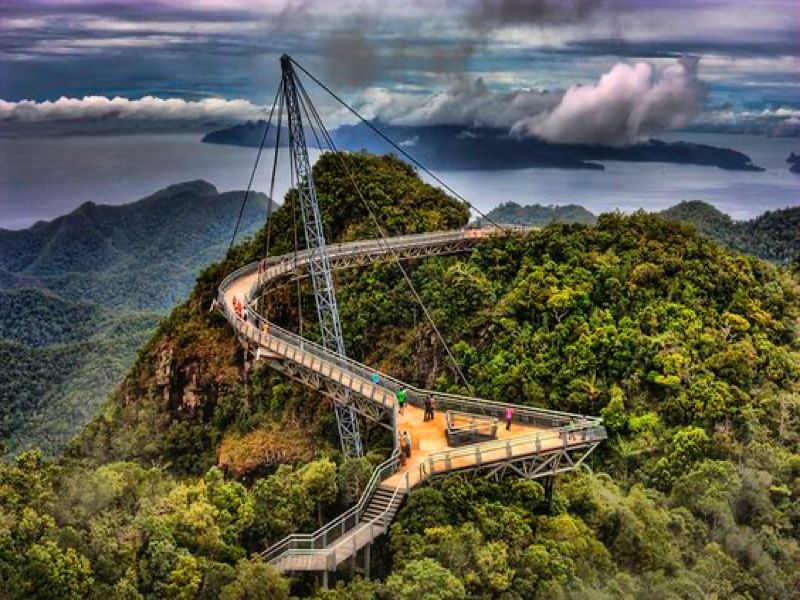
Completed in 2005, the Langkawi Sky Bridge spans 410 feet as a pedestrian cable-stayed bridge in Malaysia. In order to reach this cloud-reaching locale, travelers must first take the Langkawi Cable Car to then ride an inclined lift – SkyGlide – in order to reach the 2,170 foot above sea level bridge deck.
Titlis Cliff Walk, Switzerland
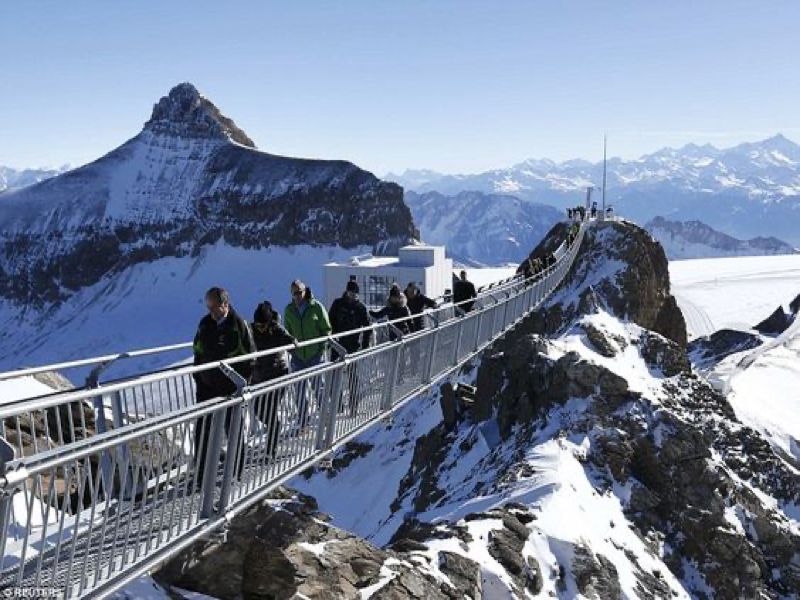
Hugging just one of the many mountains in the Swiss Alps mountain range, the Titlis Cliff Walk is an astonishing 10,000 feet above sea level. At 320 feet it’s not very long, but as it’s only three feet wide (in addition to its insane geographic location), the Titlis has often been named the “world’s scariest bridge.”
Vitim River Bridge, Russia
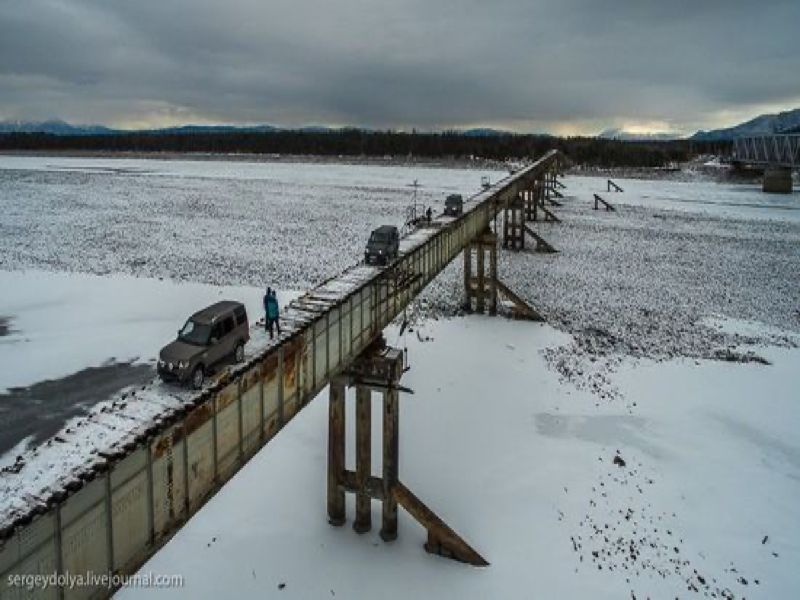
Located in Siberia, the Vitim River Bridge once held train tracks on its now rotting wooden planks. With a width of merely six feet and no safety rails, average passenger cars are at risk of falling into the Vitim River nearly 50 feet below. Still, that doesn’t stop visitors from claiming victory by crossing this questionable bridge.
Puente de Ojuela, Mexico
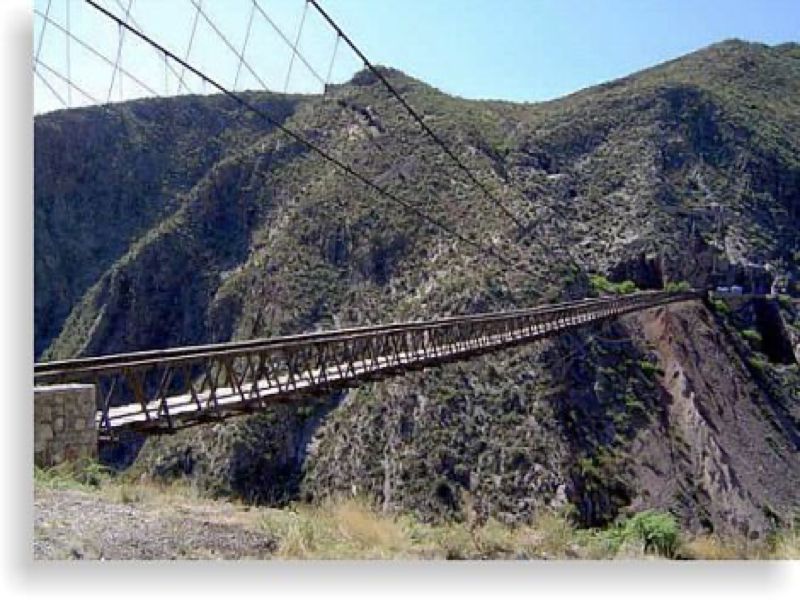
Also known as the “straightforward Ojuela” or “Mapimi” bridge, this suspension-style bridge is located in the Mexican state of Durango. While it now serves as a foot bridge for pedestrians, it once served as a major road to the site of the Ojuela Goldmine.
Iya Kazurabashi Bridge, Japan
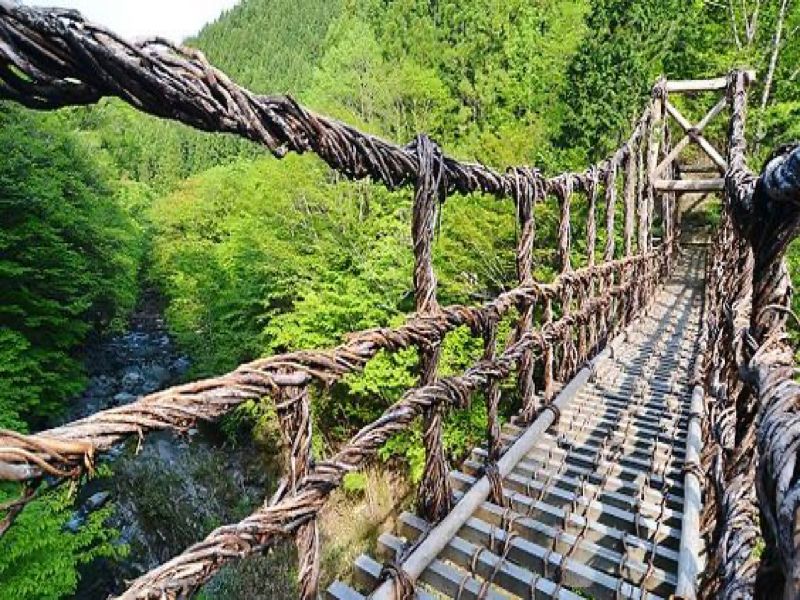
“Kazurabashi” in Japanese translates to “mountain vine” in English. Therefore, it should come as no surprise that the Japanese Iya Kazurabashi bridges are three remaining mountain vine-made bridges crossing the Iya Valley. In fact, these bridges are rebuilt every three years with the addition of a steel cable in the vines for safety. Interestingly, these bridges can only be crossed in one direction.
Eshima Ohashi Bridge, Japan
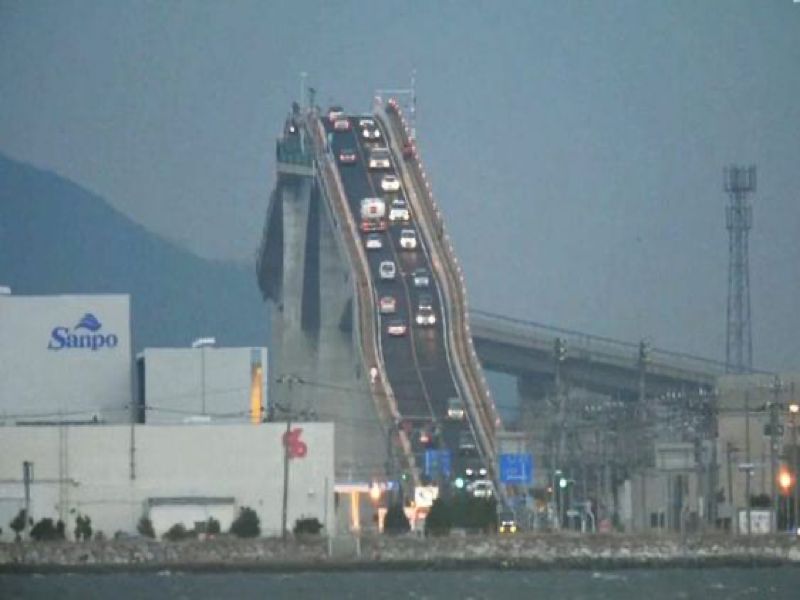
Rising high above Nakaumi Lake, the widely photographed Eshima Ohashi Bridge connects Matsue and Sakaiminato in Japan. Built over seen years, the bridge holds only a 6.1% gradient, meaning it’s not very steep. But when captured at the correct distance with a telephoto lens, the bridge appears to be incredibly steep. 4,000 cars travel across this bridge every day.
The Bridge of Immortals, China
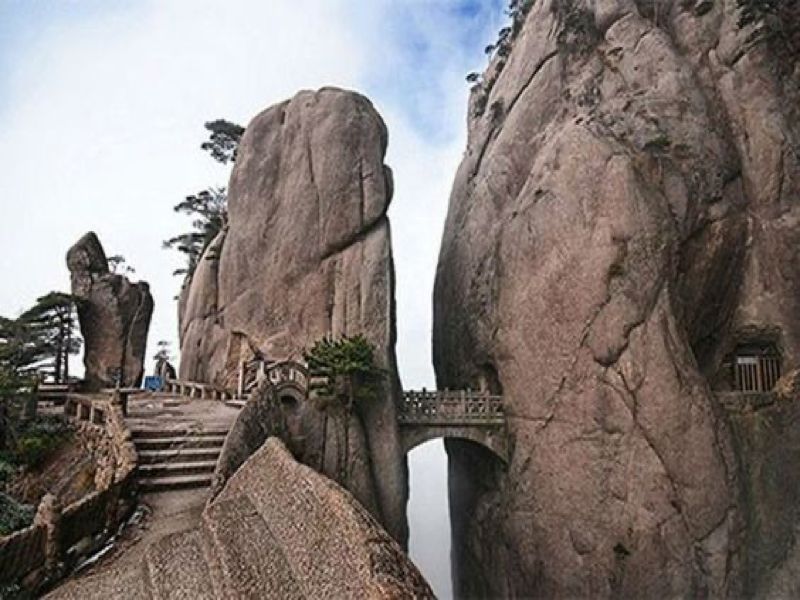
The Bridge of Immortals is found in Huangshan, China. Known also as the “Fairyland Bridge,” this stone-carved bridge connects the passage between two tunnels hewn out of the rock of these two nearby mountaintops. Although its birth looks to be centuries old, it was actually built in 1987.
Montenegro Rainforest Bridge, Costa Rica
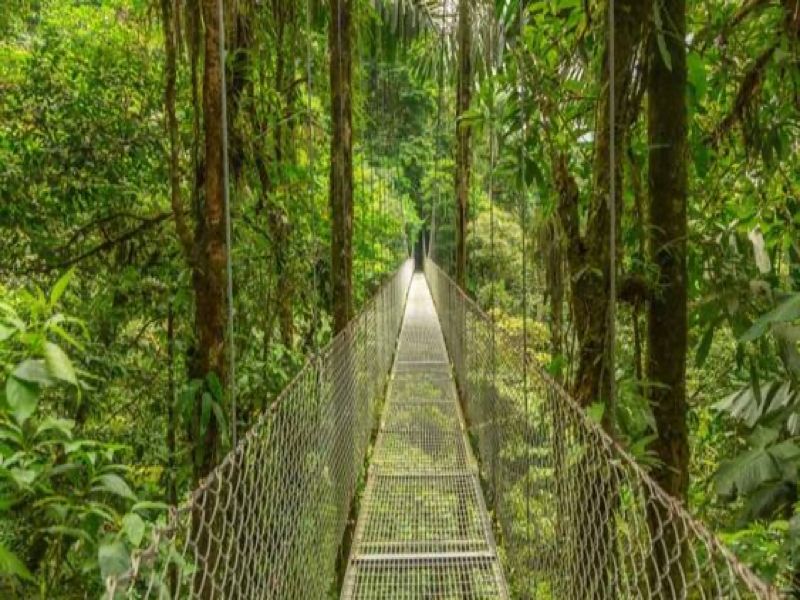
Six of these foot bridges interconnect to lead Costa Rica climbers along a 984 feet path above the Monteverde Rainforest. With plenty of canopy and a moisture-rich environment, keep your eyes out for jaguars and snakes as you swat the bugs away.
U Bein Bridge, Myanmar
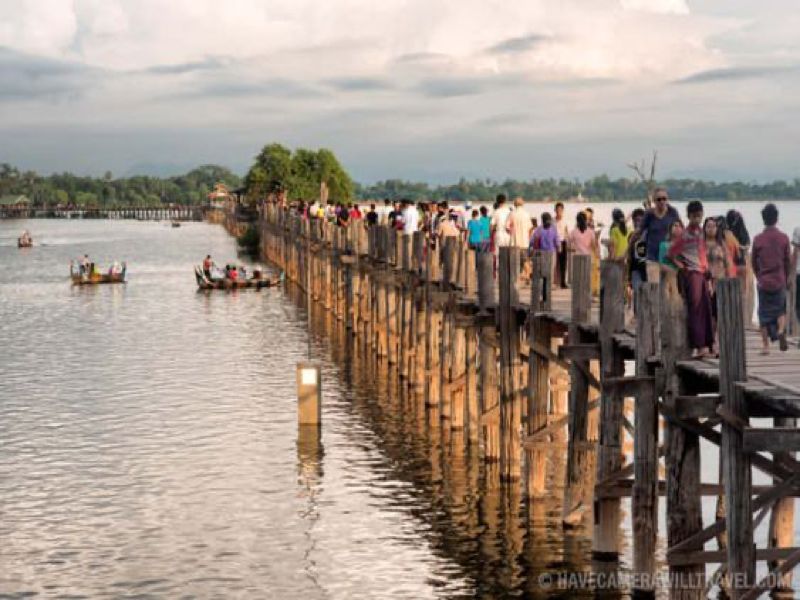
Standing nearly three-quarters of a mile across the Taungthaman Lake in Myanmar, the U Bein Bridge was constructed in the 1850s. With no guardrails and decaying teak walking planks, the bridge is slowly breaking down, especially with its tremendous amount of foot traffic. Interestingly, a police force has been established to guard the bridge, especially for tourists’ sake, as crime has been on the rise in recent years.
Royal Gorge Bridge, Colorado
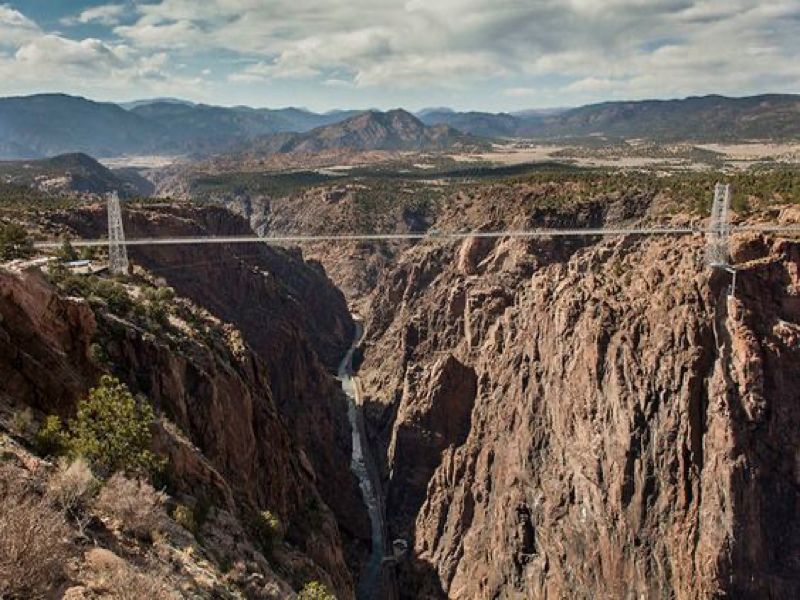
When the 1,260 foot-long Royal Gorge Bridge was first built in 1929 in the state of Colorado, it was crafted without support cables. This changed in 1982 when wind cables were added for structural integrity. Still, don’t bother looking over the edge unless you’re a thrill-seeker who loves heights.
Cloud Bridge at Daedunsan Mountain, South Korea
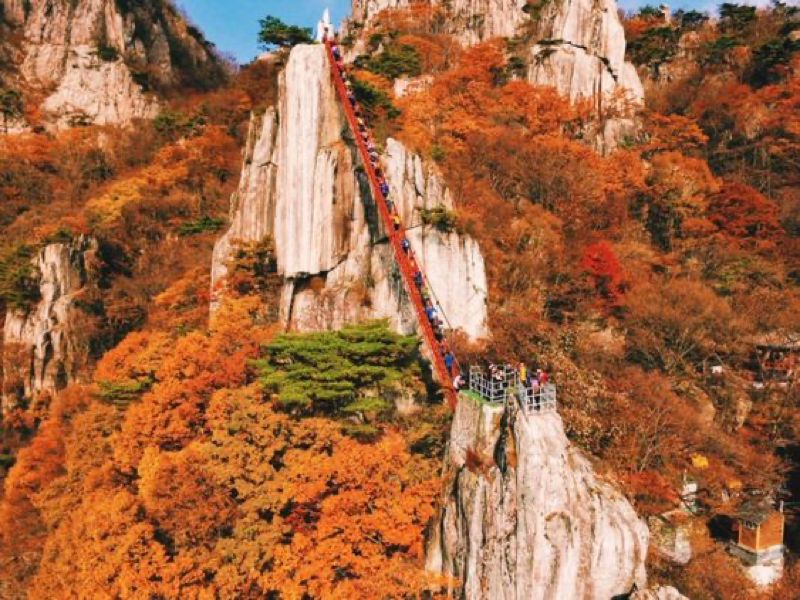
Located in South Korea, specifically the South Jeolla province, the Cloud Bridge is held within the confines of the Wolchulsan National Park – the smallest park in the country. That said, it’s the steps leading to the bridge that actually get most of the attention.
Aiguille du Midi Bridge, French Alps
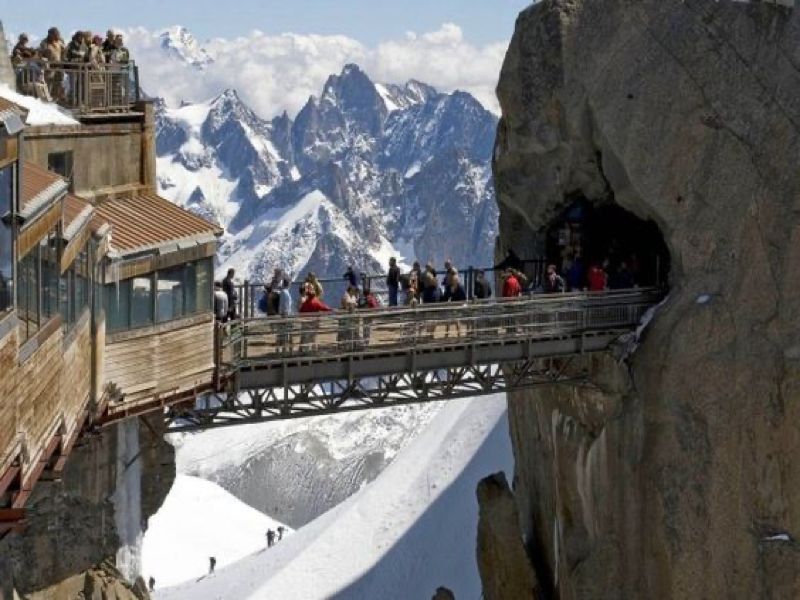
Translated from French, “Aiguille Du Midi” or “Needle of Midday” refers to the space between a rock and a hard place. While the panorama must be breathtaking, standing 12,605 feet above sea level, it’s going to take a 20-minute, 9,200 foot-rising cable car ride to get there.
Zhangjiajie Glass Bridge, China

Located above the Wulingyuan area of Zhangjiajie in Hunan, China, the Zhangjiajie Glass Bridge is a pedestrian skywalk bridge constructed of transparent glass panels. When the bridge opened in 2016, mere weeks after it was opened to tourists, it was shut down by authorities. The bridge, capable of holding 800 people at a time, was expecting 8,000 visitors per day. Instead, it initially received 80,000. Authorities shut down the bridge to further build out the infrastructure on both sides to accommodate more visitors.
Trift Bridge, Switzerland
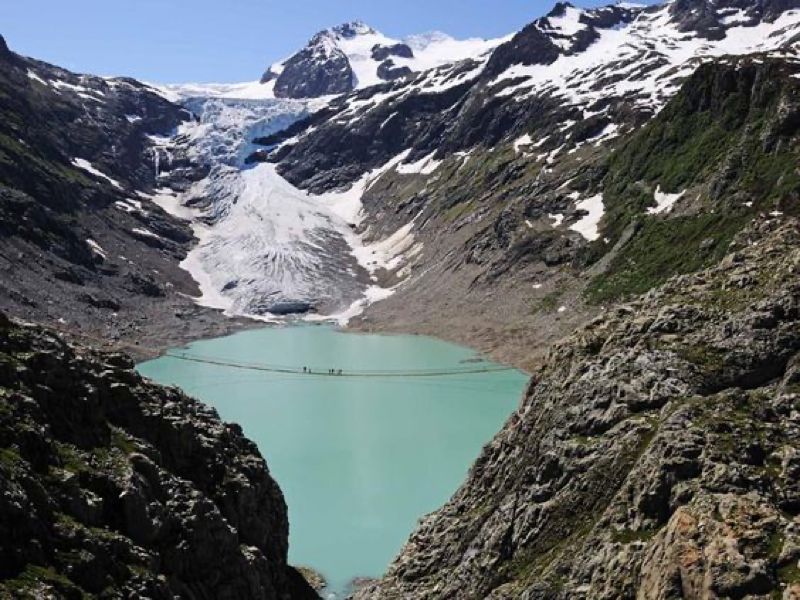
The Trift Bridge hangs 328 feet above Swiss glaciers near the town of Gadmen. Built in 2004, the bridge originally swung violently, side-to-side, due to not having stabilizing cables. This was fixed in 2009 but surely the original bridge would have been frightening.
Sidu River Bridge, China
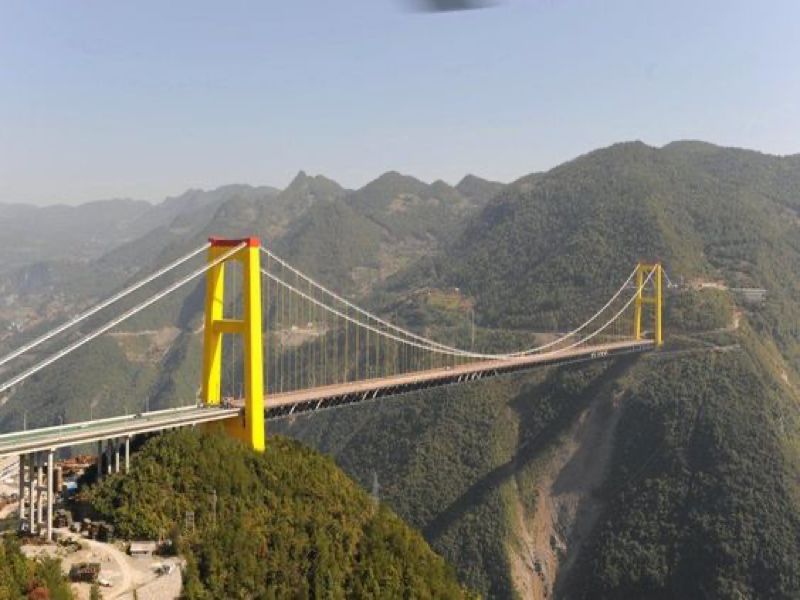
In Dadong county, China, stands the Sidu River Bridge. At its highest height the bridge stands 1,600 feet above the ground, and spans over 4,000 feet long. At its completion in 2009, it was the tallest bridge in the world.
Tianmen Skywalk, China
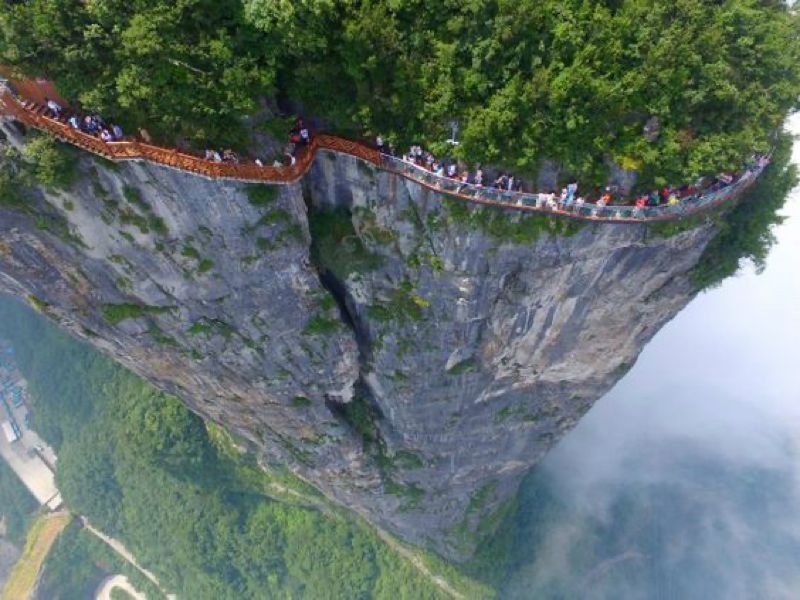
4,700 feet up in the air, a clear bridge that’s only three feet wide (2 1/2 inches thick), and only wraps around the Tianmen “Heavenly Gate” Mountain for 200 feet, the Tianmen Skywalk is no joke.
Hussaini Hanging Bridge, Pakistan

Adjacent to Borat Lake in Northern Pakistan stands the rickety Hussaini Hanging Bridge. At no point in time was the bridge professionally constructed. Instead, it’s been destroyed and continuously rebuilt with uneven spacing composed sticks and wooden planks.
Seven Mile Bridge, Florida
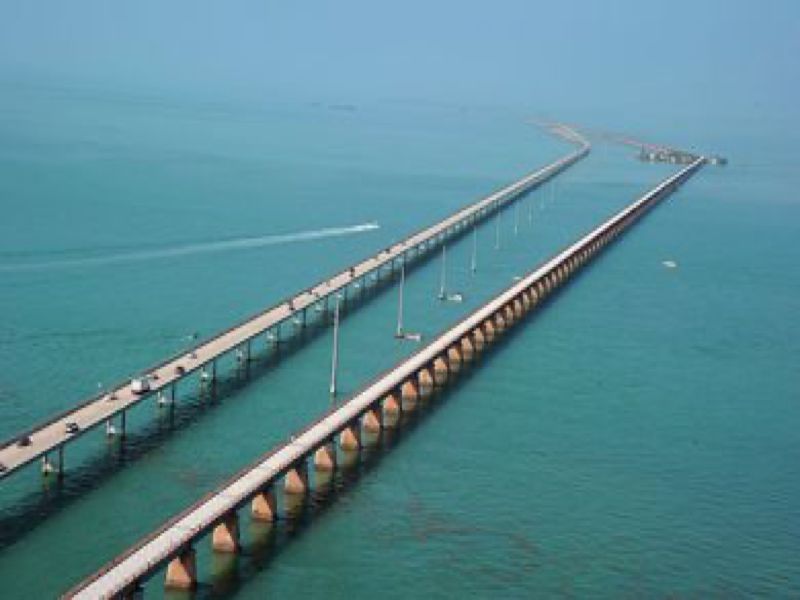
Not quite spanning the full seven miles, the Seven Mile Bridge can be stretching from Knight’s Key in Marathon, Florida to the lower Florida keys. On a sunny day, conditions appears quite lovely, but due to frequent hurricane-like conditions, Seven Mile Bridge can be considered one of the more deadly bridges in existence.
Storseisundet Bridge, Norway

The Storseisundet Bridge in Norway connects the island of Averøya to the country mainland. Interestingly, although the bridge sits near sea level, barely reaching over 75 feet tall at its highest point, this 850 foot-long bridge took six years to build. Why? Well, construction was delayed by 12 hurricanes.
Keshwa Chaca Bridge, Peru
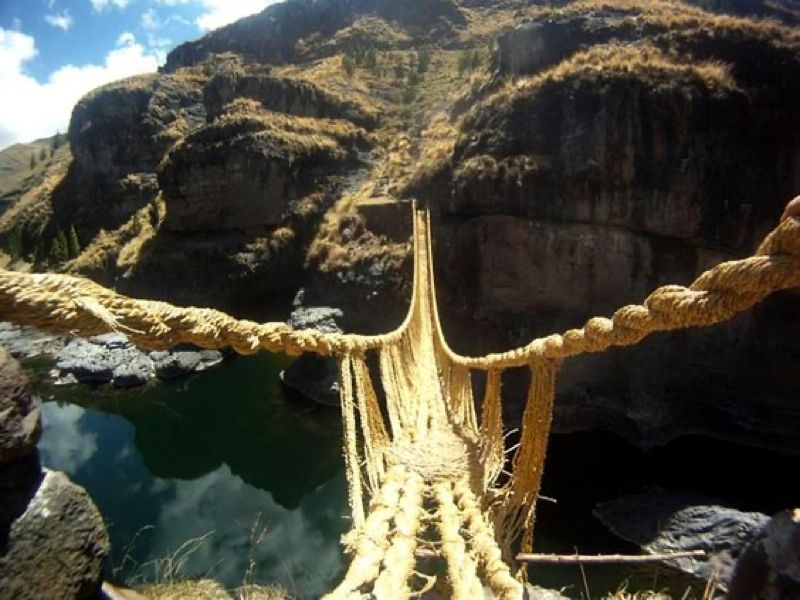
Built during the rule of the Incans, the Keshwa Chaca Bridge in Peru is a statement of ancient engineering. 500 years ago, this bridge was constructed out of grass, of all things. The women braided thin ropes while the men took these thin ropes and transformed them into “support cables.” Given its material and age, this is one of the last examples of the engineering prowess displayed by the Incans.
Longjiang Suspension Bridge, China
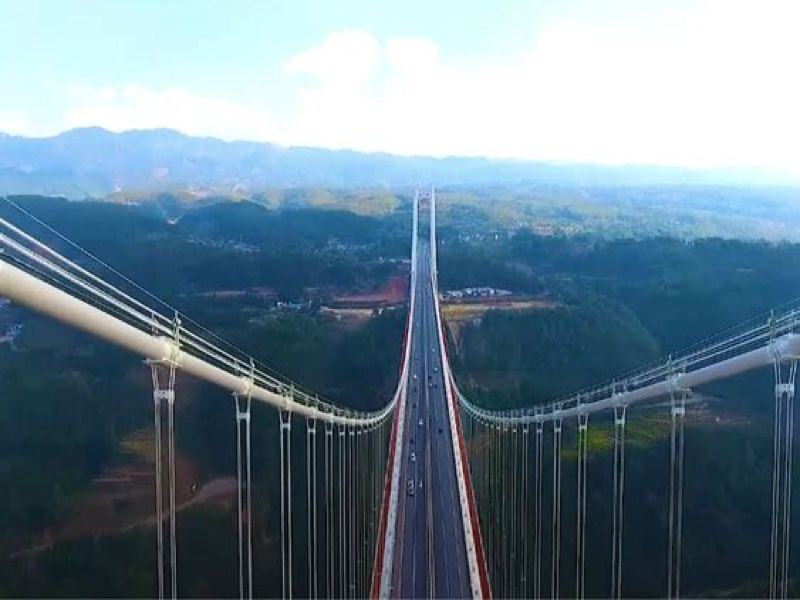
At a cost of 1.96 billion yuan ($300+ million), the Longjiang Bridge was constructed in Baoshan, Yunnan, China in 2016. Connecting Baoshan and Tengchong with Myanmar, the Longjiang Bridge is one the highest standing – 920 feet above the river below.
Moses Bridge, Netherlands
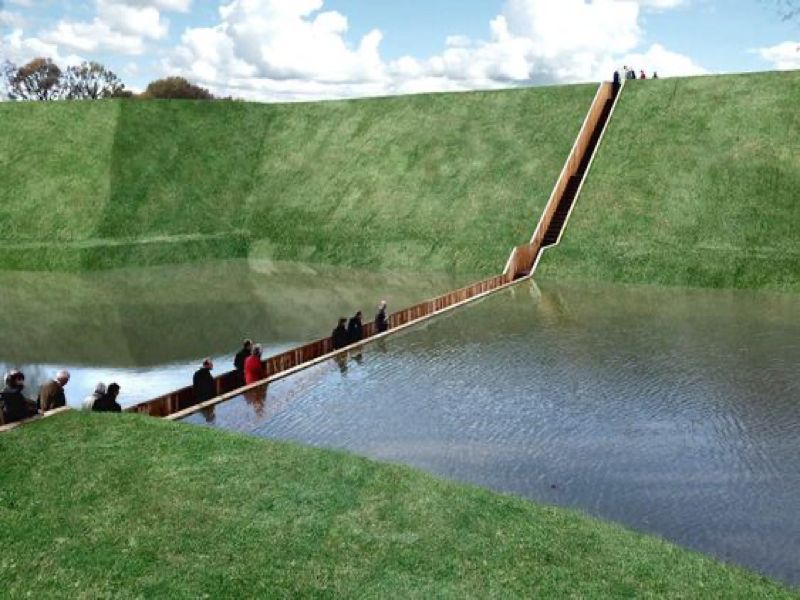
The Moses Bridge, found in the Fort De Roovere (an earthen fort located in the Netherlands), was established as a water-based defense conceived and built during the Eighty Years War in 1628. Its design captures the curiosity of those near and far, especially because it’s sunken into a moat fortress.
Plank Bridge, Indonesia
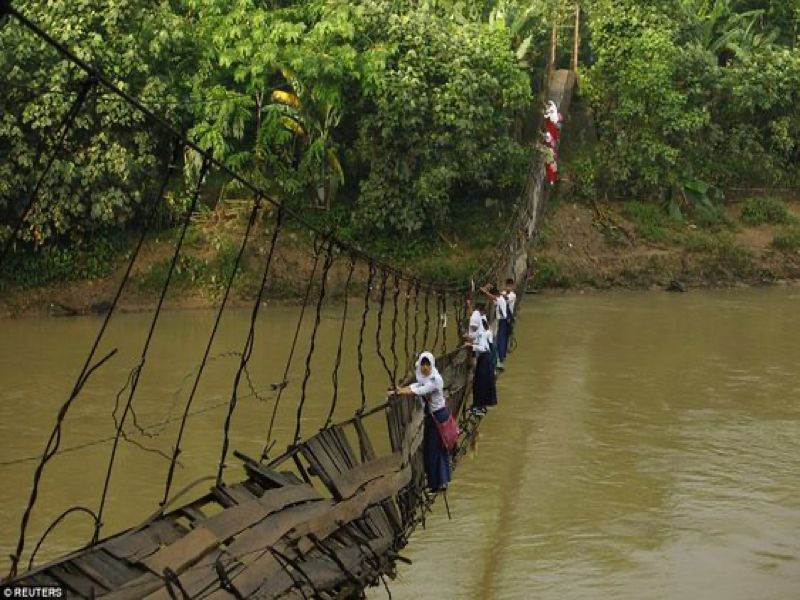
In Indonesia you have the opportunity to come face-to-face with this disaster of a plank bridge. As noted by its one line horizontal and vertical support, this plank bridge has seen better days. Local Indonesians who still need to cross the river must do so very carefully or risk falling into these questionable waters.
Monkey Bridges, Vietnam
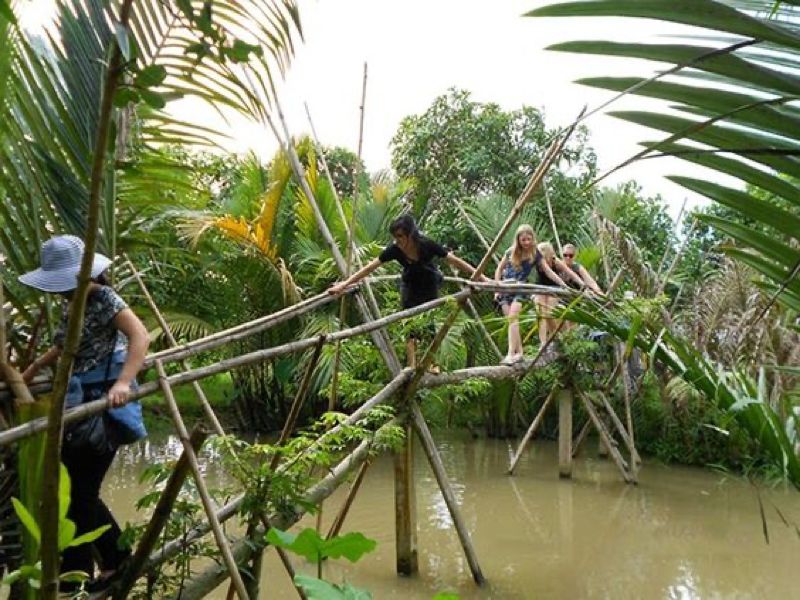
“Monkey bridges,” as they’re known in Vietnam, are wooden or bamboo passageways, often hanging over gullies or streams. They may also be composed of bamboo or coconut. They may or may not be built with hand rails, making them difficult to maneuver, regardless. Even locals have been known to fall in the water.
Carrick-a-Rede Rope Bridge, Northern Ireland
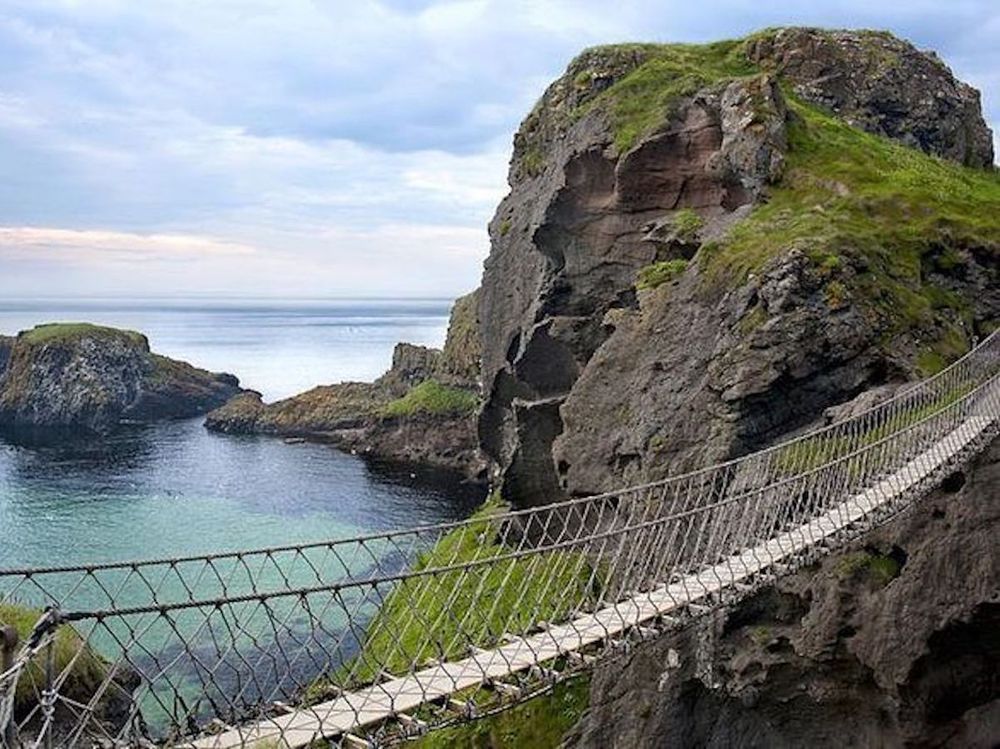
This rope bridge might be situated in the most beautiful location on our list- between two islands in Northern Ireland. The bridge itself is probably safe, considering there’s a crossing fee for upkeep, but it’s still a bit of terrifying journey, leading many travelers to only cross the bridge one way and return by different means.
Sunshine Skyway Bridge, U.S.A.
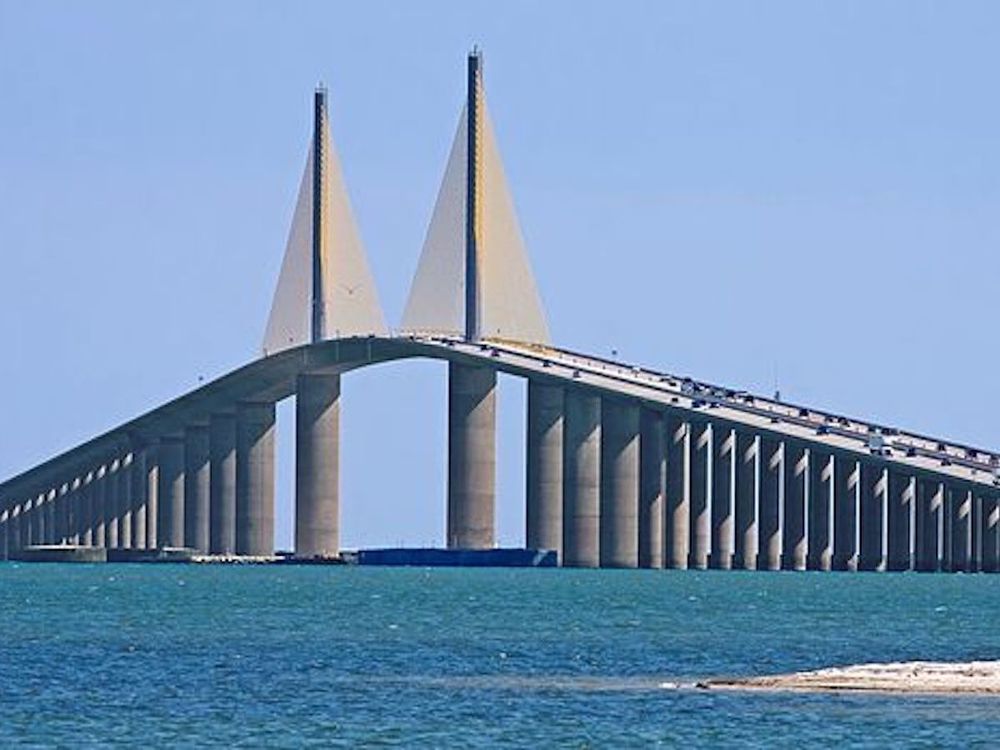
Tampa Bay’s Sunshine Skyway Bridge was born out of tragedy. The structure, which opened in 1987, was the replacement of a previous bridge of the same name that was destroyed when an oil tanker collided with one if its supports in 1980, killing 35 people in the process. The new structures has had its fair share of darkness as well, with more than 200 documented jumpers in the structure’s history.
Quepos Bridge, Costa Rica

The reputation of Costa Rica’s Quepos Bridge can be summed up nicely by the nickname locals have colloquially nicknamed it- “the bridge of death.” Nuff said there.
Lake Pontchartrain Causeway, U.S.A.
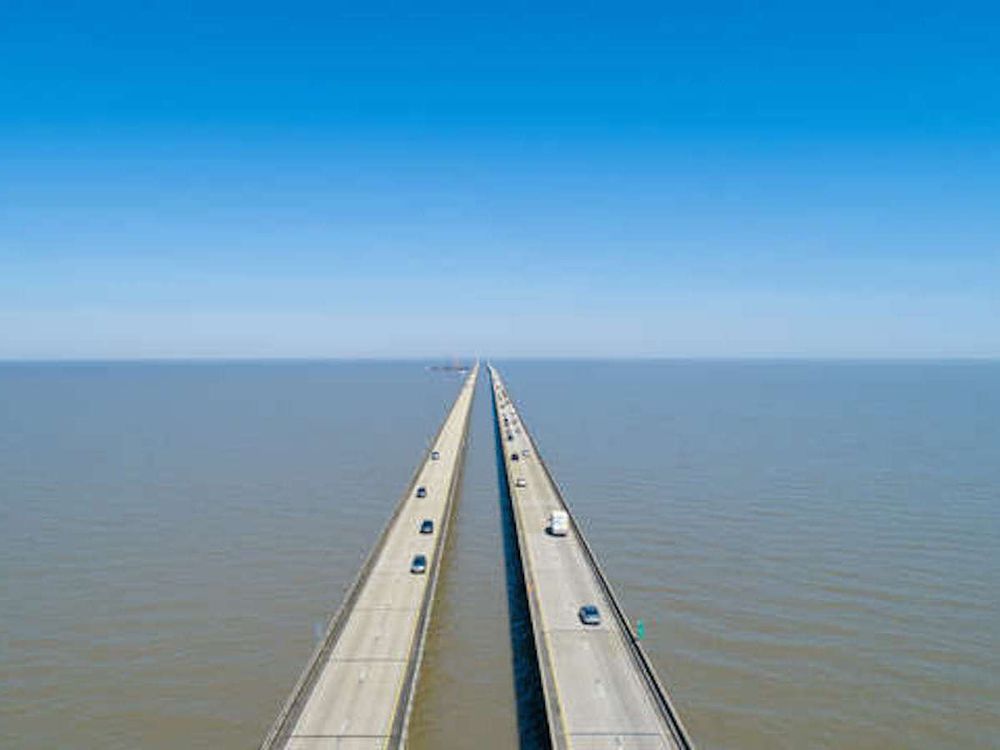
The Lake Pontchartrain Causeway, which connects Mandeville with Metairie in Louisiana. It holds the record for longest continuous bridge over water in the world, and the experience of driving over it with no land in sight for miles and miles can be terrifying.
Deception Pass, U.S.A.
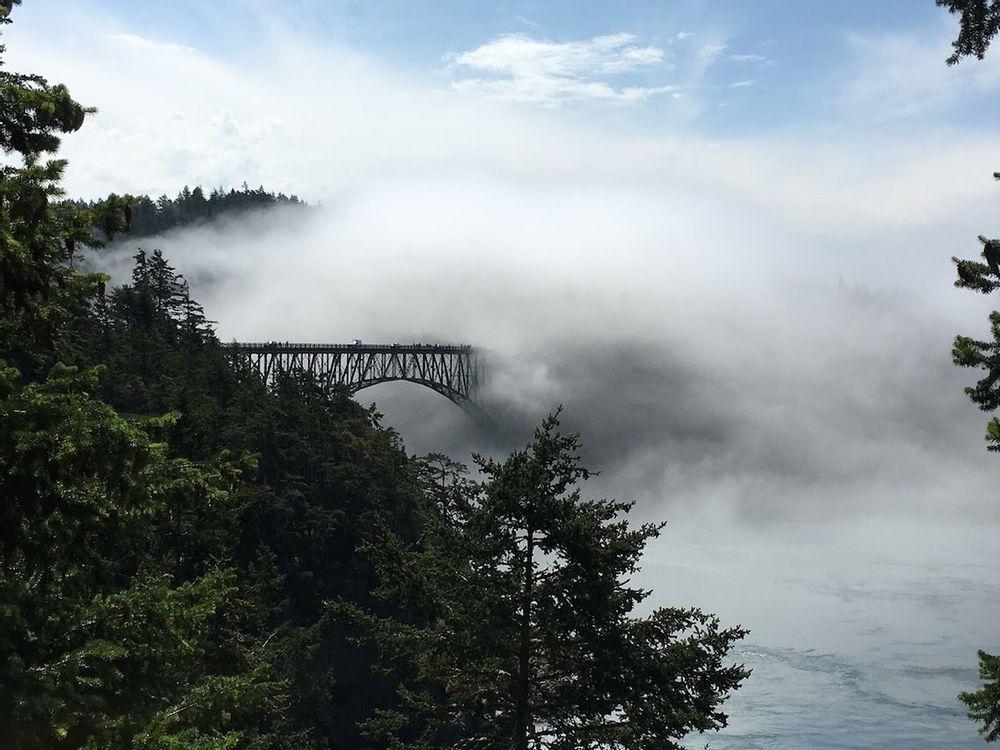
The Deception Pass Bridge is a set of two, two lane bridges that connect Whidbey Island to Fidalgo Island across the Puget Sound in Washington state. The bridges are well-known for the copious amount of fog that overtake them at times, giving them a cliche horror movie look at times.
Capilano Suspension Bridge, Canada
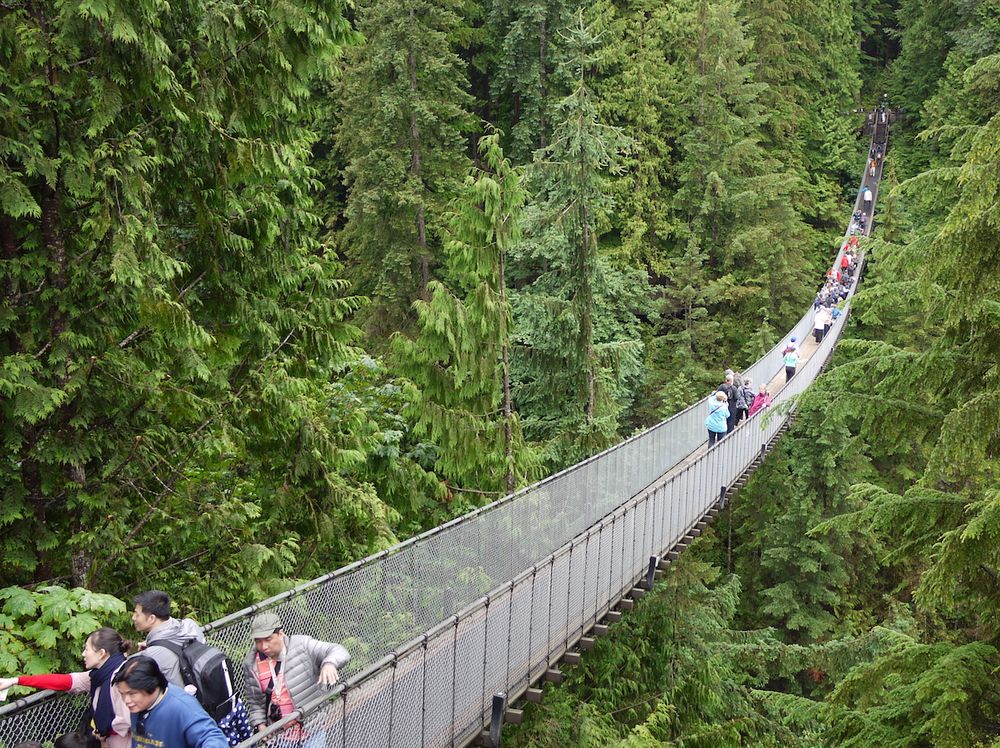
Vancouver’s Capilano Suspension Bridge is one of Canada’s best known tourist attractions… and one off its most infamous. Over the course of its life, the privately owned 460 ft. span has seen several well-publicized death.
Hanging Bridge of Ghasa, Nepal
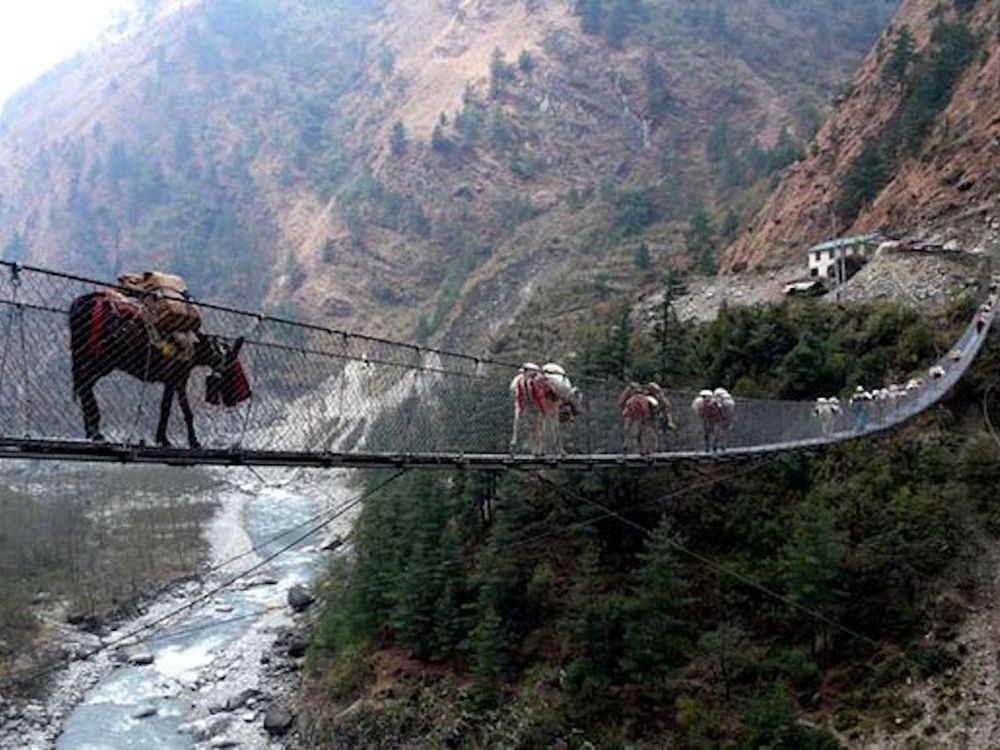
Nepal’s Hanging Bridge of Ghasa is most famous for use transporting livestock, as seen above. Perhaps this is because it’s way to terrifying for most humans.
Kawarau Bridge, New Zealand
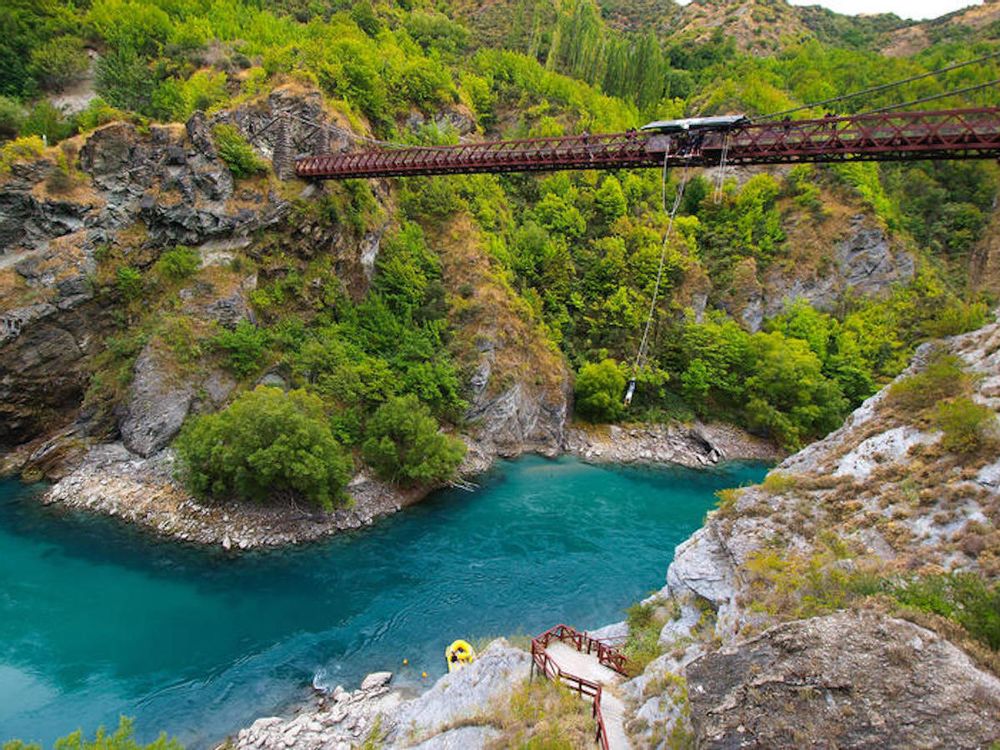
New Zealand’s Kawarau Gorge Suspension Bridge runs over the Kawarau River in the Otago region in the South Island of New Zealand. It’s renown for being the world’s first site to offer commercial bungee jumping, which in turn makes it the only entry on our list where jumping of any sort is encouraged.
Windsor Bridge, Gibraltar
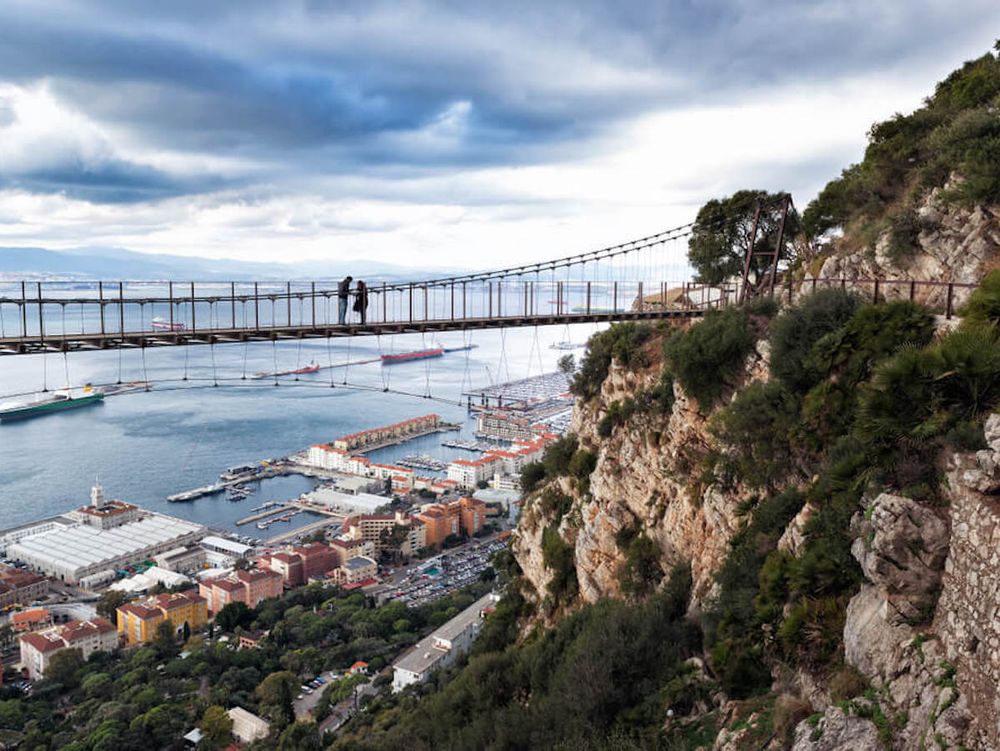
The fact that the Windsor Bridge is located along a path known as “thrill seeker’s trail” should give one. pretty good idea of just how terrifying crossing it can be.
Millau Viaduct Bridge, France
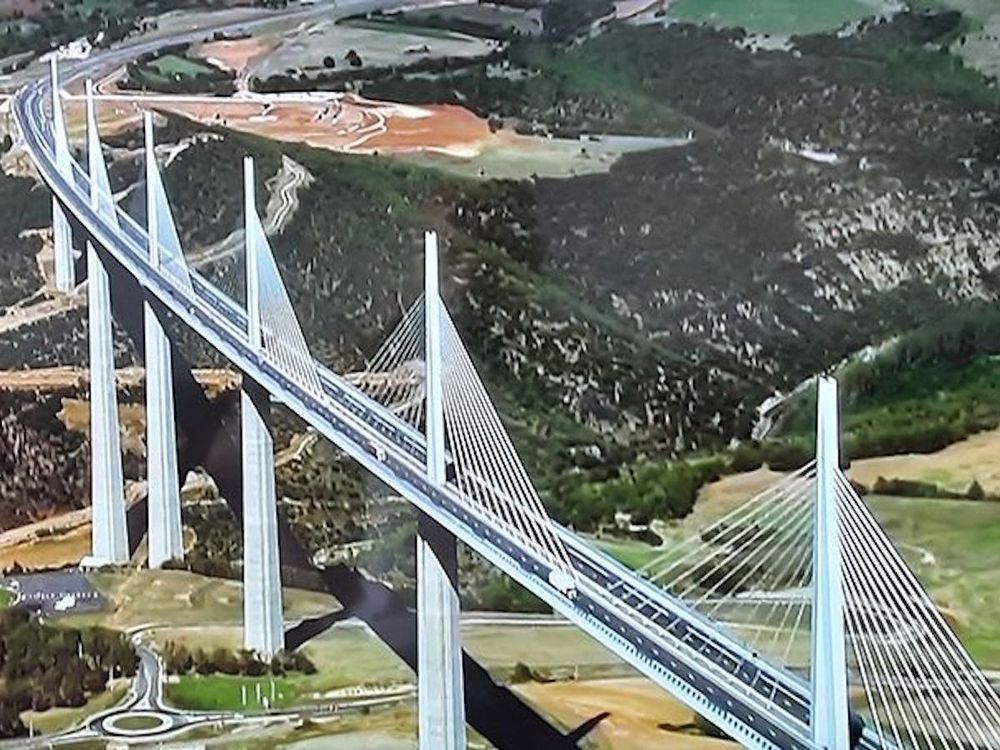
Standing 1,125 above the gorge of the Tarn River valley in southern France., the Millau Viaduct Bridge is a marvel. At 8,000 feet long and 105 feet wide, traversing the bridge can feel like flying amongst the clouds, which can be exhilarating or terrifying depending how one feels about heights.
Quick Links
